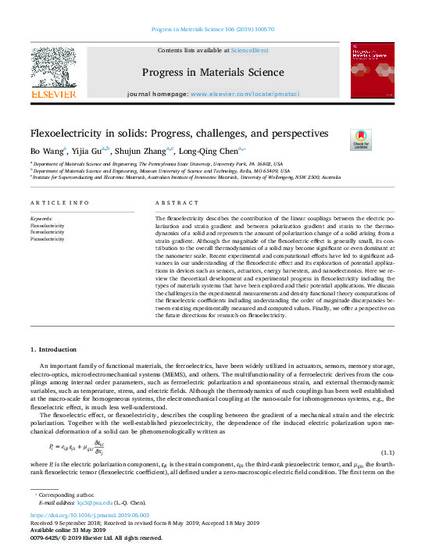
Article
Flexoelectricity in solids Progress, challenges, and perspectives
Progress in Materials Science
(2019)
Abstract
The flexoelectricity describes the contribution of the linear couplings between the electric po- larization and strain gradient and between polarization gradient and strain to the thermo- dynamics of a solid and represents the amount of polarization change of a solid arising from a strain gradient. Although the magnitude of the flexoelectric effect is generally small, its con- tribution to the overall thermodynamics of a solid may become significant or even dominant at the nanometer scale. Recent experimental and computational efforts have led to significant ad- vances in our understanding of the flexoelectric effect and its exploration of potential applica- tions in devices such as sensors, actuators, energy harvesters, and nanoelectronics. Here we re- view the theoretical development and experimental progress in flexoelectricity including the types of materials systems that have been explored and their potential applications. We discuss the challenges in the experimental measurements and density functional theory computations of the flexoelectric coefficients including understanding the order of magnitude discrepancies be- tween existing experimentally measured and computed values. Finally, we offer a perspective on the future directions for research on flexoelectricity.
Keywords
- Flexoelectricity,
- Ferroelectricity,
- Piezoelectricity
Disciplines
Publication Date
Summer May 31, 2019
DOI
10.1016/j.pmatsci.2019.05.003
Citation Information
Bo Wang, Yijia Gu, Shujun Zhang and Long-Qing Chen. "Flexoelectricity in solids Progress, challenges, and perspectives" Progress in Materials Science Vol. 106 (2019) p. 100570 Available at: http://works.bepress.com/yijia-gu/70/
